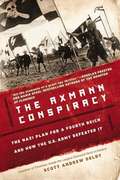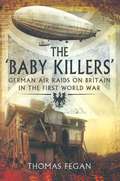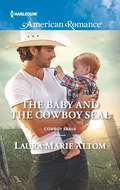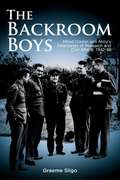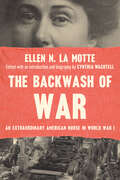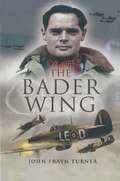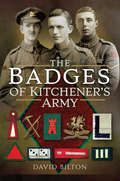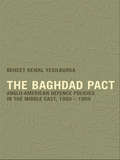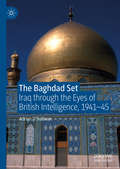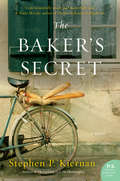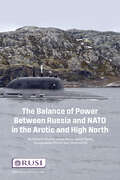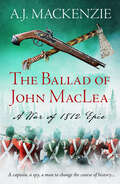- Table View
- List View
The Axis Alliance and Japanese-American Relations, 1941: American Relations 1941
by Dr Paul W. SchroederThe Japanese attack on Pearl Harbor on December 7, 1941 is remembered by Americans as something like a bolt out of the blue, a sneak attack from an irrational enemy. The truth, however, is that the Japanese attack was preceded by six months of intense diplomatic negotiations between the Japanese and the Americans.In The Axis Alliance and Japanese-American Relations, historian Paul Schroeder reviews the course of these negotiations. Of particular interest to Schroeder is the role that Japan’s Tripartite Pact with fascist Italy and Nazi Germany played in the negotiations.Schroeder shows that Japan, far from entering an alliance for world domination with Hitler, viewed the pact as an opportunity to secure its interests while avoiding a war with the U.S. and how, when the Pact became a liability in Japan’s negotiations with America, the Japanese were quick to downplay their dedication to it and its importance in their policies. Schroeder also observes the other primary issues at stake in the negotiations—Japan’s war with China and its expansionary intentions in the Pacific—and discusses how American diplomacy wasted many opportunities to not only avoid war in the Pacific, but secure concessions from Japan.This book, a scholarly reconsideration of American policy leading up to the war, is notable for its balance and accuracy and for its revisionist conclusions that are wholly supportable by the facts.
The Axmann Conspiracy
by Scott Andrew SelbyBerlin, 1945: Artur Axmann--a trusted member of Hitler's inner circle and leader of the Hitler Youth--witnesses the Führer commit suicide. But he would not let the Reich die with its leader . . . Evading capture, and with access to remnants of the regime's wealth, Axmann had enough followers to reestablish the Nazi party in the very heart of Allied-occupied Germany--and position himself to become dictator of a Fourth Reich. U.S. Army Counter Intelligence Corps Officer Jack Hunter was the perfect undercover operative. Fluent in German, he posed as a black marketeer to root out Nazi sympathizers and saboteurs after the war, and along with other CIC agents uncovered the extent of Axmann's conspiracy. It threatened to bring the Nazis back into power--and the task fell to Hunter and his team to stop it. The Axmann Conspiracy is the true story of the Nazi threat that continued in the wake of World War II, the espionage that defeated it, and two fascinating men whose lives forever altered the course of history. INCLUDES PHOTOGRAPHS AND MAPS
The BBC German Service during the Second World War: Broadcasting to the Enemy (Palgrave Studies in the History of the Media)
by Vike Martina PlockThis book, part media history and part group biography, tells the story of the BBC’s attempts to reach out to listeners in Nazi Germany at a time when Anglo-German relations were particularly strained. Who were the individuals behind the microphone, whose names could only be mentioned in whispered conversations on the continent? Who wrote the satirical sketches that offered comic relief to housewives struggling to obtain enough food to feed their families? And who made decisions about programme delivery and staffing? Drawing extensively on previously unexamined archival material, The BBC German Service during the Second World War: Broadcasting to the Enemy sheds light on the complex, often difficult working arrangements at the wartime BBC where people from different nationalities and socio-political backgrounds collaborated and argued about the delivery of an effective propaganda programme that would assist the Allies in defeating the Nazis.
The BEF Campaign on the Aisne 1914: 'In the Company of Ghosts'
by Jerry MurlandThe river Aisne featured prominently in August 1914 during the Retreat from Mons and in September was the scene of bitter fighting when the BEF re-crossed it in their unsuccessful attempt to dislodge the German Army entrenched along the Northern Crest.The fighting was hugely costly to the BEF, which had already fought three major engagements and marched over 200 miles in a month. The three British Corps lost over 700 officers and some 15,000 men. Little wonder one officer wrote that he felt he was in the company of ghosts.Historian Jerry Murland places the Aisne battles in their context, both from the BEF and German viewpoints. He highlights the early deficiencies and unpreparedness of the British Army staff and logistics organization as well as friction among the command structure, all of which hampered effective operations.
The BEF in 1917: Arras, Vimy, Messines, Passchendaele and Cambrai (Images of War)
by Bob CarruthersThis new volume in the long-running Images of War series features the actions of the British Army at Passchendaele. The book is comprised of rare photographs illustrating the years of fighting on the northern sector of the Ypres salient, which finally culminated in the capture of the ridge at Passchendaele, accompanied by a powerful text written by Official War Correspondent Philip Gibbs, who was an eyewitness to the events. Photographs from the battlefield illustrate the terrible conditions, which the British forces on the battlefield endured in the notorious engagement, which has become synonymous with mud and squalor.This book incorporates a wide range of images, encompassing the actions of the British infantry and their supporting artillery. Also featured are images which depict the almost incomprehensible state of the waterlogged trenches. Portraits of the British troops are contrasted with German prisoners of war and the endless battle to get the supply columns through to the front.
The Baby Killers: German Air Raids on Britain in the First World War
by Thomas FeganJust over a decade after the Wright Brothers triumph of powered flight, the conduct of war was changed for ever. Until the Kaisers Zeppelins raided British cities and towns, it had been unthinkable that civilian populations and property hundreds of miles from the battlefield could be at risk from sudden death and destruction.In the first section of The Baby Killers Thomas Fegan charts the precise chronology of the air raids on Britain in this most thorough and fascinating work. From the start-point of the doom-laden prophecies of HG Wells and others, he describes the development of the German threat and the desperate search for answers to it. He analyses public reaction and assesses the effectiveness of the campaign as it progressed from airships to Gotha heavy bombers and, later, Giants.The second part of this superbly researched book features a gazetteer to the places bombed. The extent of the list, which includes Edinburgh, Hull and Greater Manchester, will almost certainly surprise most readers. Helpfully there are also comprehensive lists of memorials and relevant museums. The Baby Killers provides a chilling insight into an aspect of The Great War which is all too often overlooked. Yet, at the time, these raids, while modest compared with those of the Second World War Blitz, shook nationalmorale and instilled great fear and outrage. This is an important and highly readable work.
The Baby Wore a Badge (Montana Mavericks: The Texans Are Coming #2)
by Marie FerrarellaFrom Super Cop...to Super Dad?Now we've seen everything. Jake Castro has come to Thunder Canyon...with a seven-month-old infant in tow! The decorated police officer is clearly hoping the family-friendly town will prove the perfect place to raise his daughter. But the rumor mills started to churn the moment Calista Clifton was hired to help out the handsome single father...Serious sparks flew as soon as our hometown star met the out-of-town hero. But my sources tell me Jake might not yet be ready to settle down, despite his daddy status. Can he make Calista's dreams come true-and transform the babysitter into a bride? Stay tuned, loyal readers-this column will reveal all!
The Baby and the Cowboy SEAL
by Laura Marie AltomA BROKEN SEAL Former Navy SEAL Wiley James is lucky to be alive, but the war destroyed his health, his confidence and his livelihood. Now, back at his family's Montana ranch, Wiley struggles to find new purpose. Instead he finds an old childhood pal-little Macy Shelton, who has grown into a beautiful woman. Wiley knows he should steer clear of the cheery single mom...if only she'd let him. Macy doesn't recognize this new Wiley. A bitter stranger has replaced the young man she fell for as a teen. Though Macy's heart still wants so much more, what Wiley needs most right now is a friend, and Macy is the only one he'll let in. Her friendship is a lifeline, but will Macy's love be the one thing that can finally help Wiley begin to heal?
The Background Of Napoleonic Warfare: The Theory Of Military Tactics In Eighteenth-Century France
by Professor Robert S. QuimbyProfessor Emeritus Robert S. Quimby examines the strategic and tactical revolution that swept through the French military hierarchy in the Eighteenth Century and forged the superb instrument that became lethal in the hands of Napoleon and his generals.“The period from the opening of the War of the Spanish Succession to the meeting of the Estates-General is generally looked upon as a period of decadence in the history of the French Army. Compared with the great days of Louis XIV or with those of the Revolution and Napoleon this estimate seems correct enough. It was a period of many humiliations. The disasters inflicted upon France by Marlborough and Prince Eugene were followed by the much more humiliating failures of the Seven Years’ War. Yet the record is not without its glorious moments. During the War of the Austrian Succession, a series of brilliant successes was won under the leadership of the great Saxe.If the combat record of the French Army was, to say the least, uneven during the eighteenth century, such was not the case with its intellectual achievements. The French Army stood foremost among all those of Europe in this respect. Throughout most of the years of the century, there was a great intellectual ferment within the Army leading to major developments in ideas and in material improvement.Within a few years after the War of the Spanish Succession, books began to appear, pointing out defects in the tactics then in use and proposing changes. After the Seven Years’ War, the number of such books greatly increased. The result was to stimulate an ardent and at times acrimonious debate. Book countered book; pamphlets and memorials multiplied. Gradually, through the abandonment of more extreme ideas, a compromise was worked out. Embodied in the Ordinance of 1791, this became the basis for the tactics of the Wars of the French Revolution and of Napoleon.”-Introduction.
The Backlash Mission (The Blackcollar Series #2)
by Timothy ZahnIn the sequel to Blackcollar from the #1 New York Times–bestselling author of Star Wars: Thrawn, Allen Caine is back on the front lines of an alien war. Denver, Earth. The twenty-fifth century. After a devastating alien invasion, the Terran Democratic Empire is occupied by the Ryqril race. The once-heroic resistance warriors known as the blackcollars now serve as strong-arm security for Denver&’s criminal elements. When Allen Caine completes his year-long blackcollar training on the planet Plinry, he and his elite team head to Earth to strike out against the Ryqril puppet government. But there&’s no way of knowing whether the remaining blackcollars in Denver will be with him, or against him. . . .
The Backroom Boys: Alfred Conlon and Army's Directorate of Research and Civil Affairs,1942-46
by Graeme SligoThe Backroom Boys is the remarkable, but little known, story of how a varied group of talented intellectuals, drafted into the Australian Army in the dark days of 1942, provided high-level policy advice to Australia’s most senior soldier, General Blamey, and through him to the Government for the remainder of the war and beyond. This band of academics, lawyers and New Guinea patrol officers formed a unique military unit, the Directorate of Research and Civil Affairs, under the command of an eccentric and masterful string-puller, Alf Conlon. The Directorate has been depicted as a haven for underemployed poets or meddlesome soldier-politicians. Based on wide-ranging research, this book reveals a fuller and more fascinating picture. The fierce conflicts in the wartime bureaucracy between public servants and soldiers, in which the Directorate provided critical support to Blamey, went to the heart of military command, accountability and the profession of arms. The Directorate was a pioneer in developing approaches to military government in areas liberated by the combat troops, as demonstrated by the Australian Army in New Guinea, and Borneo in 1945-46. It is an issue of enduring importance. The Directorate established the Australian School of Pacific Administration, and had an important role in founding the Australian National University. Its influence extended into post war Australia. The Backroom Boys emphasises the personality of Colonel Alf Conlon, as well as the talented men and women he recruited. Above all, this book shows how, unexpectedly, the Australian Army fostered a group of men and women who made a lasting contribution to the development of Australia in the decades after the war.
The Backwash of War: An Extraordinary American Nurse in World War I
by Ellen N. La MotteBanned in multiple countries for its frank depiction of the horrors of war, Ellen N. La Motte's The Backwash of War is one of the most stunning antiwar books ever published."We are witnessing a phase in the evolution of humanity, a phase called War—and the slow, onward progress stirs up the slime in the shallows, and this is the Backwash of War. It is very ugly."—Ellen N. La MotteIn September 1916, as World War I advanced into a third deadly year, an American woman named Ellen N. La Motte published a collection of stories about her experience as a war nurse. Deemed damaging to morale, The Backwash of War was immediately banned in both England and France and later censored in wartime America. At once deeply unsettling and darkly humorous, this compelling book presents a unique view of the destruction wrought by war to the human body and spirit. Long neglected, it is an astounding book by an extraordinary woman and merits a place among major works of WWI literature. This volume gathers, for the first time, La Motte's published writing about the First World War. In addition to Backwash, it includes three long-forgotten essays. Annotated for a modern audience, the book features both a comprehensive introduction to La Motte's war-time writing in its historical and literary contexts and the first extended biography of the "lost" author of this "lost classic." Not only did La Motte boldly breach decorum in writing The Backwash of War, but she also forcefully challenged societal norms in other equally remarkable ways, as a debutante turned Johns Hopkins–trained nurse, pathbreaking public health advocate and administrator, suffragette, journalist, writer, lesbian, and self-proclaimed anarchist.
The Bader Wing (Airlife's Classics Ser.)
by John Frayn TurnerDouglas Bader remains a legendary figure, and the best known of all the Battle of Britain aces. Having lost both his legs in a pre-war flying accident, Bader overcame this disability to become not just a superb fighter pilot but a tough and charismatic leader. At a critical time in the War, Bader persuaded his superiors that fighters were best employed in Big Wings and was given the chance to lead five squadrons. This he did with conspicuous success until shot down over France and captured. In addition to describing the dramatic aerial actions of the pilots involved, this book examines the tactics and strategy of the Big Wing principle drawing on the views and opinions of some of the greatest pilots of the Second World War including Johnnie Johnson, Laddie Lucas, Hugh Dundas, Alan Deere and Sholto Douglas.
The Badges of Kitchener's Army
by David BiltonBadges of Kitchener's Army is based on thirty years research in museums, archives and collections. It is an exhaustive study of the development of the battalion, brigade and divisional signs of the thirty divisions raised by Kitchener's appeal for men. While the divisional signs are well known, there has been little authoritative work on the signs worn by the infantry battalions. The book will illustrate the unique cap and shoulder titles used, as well as cloth signs worn to provide easy recognition in the trenches. Each service battalion, of each regiment has a listing, which provides a brief history of the unit and detailed information on the badges worn.It is prodigiously illustrated and contains much information, like why a shape or color was chosen, when it was adopted, what size it was, whether it was worn on a helmet, what color the helmet was and even what colors were used on horse transport; the majority of this rich and detailed information has never been published before. What helps make the information accurate and authoritative is that much of it comes from an archive created at the time and from personal correspondence with hundreds of veterans in the 1980s, many of whom still had their badges and often had razor-sharp recollections about wearing them. The book will also provide some comments from these veterans. A further unique aspect of the book is that it will look at the uniforms and badges worn before the battalions left the country, providing much new information that will enable people to identify any photographs they have lying around.
The Badlands (Star Trek)
by Susan WrightLocated perilously near the Cardassian border, the turbulent region of space known as the Badlands has been an interstellar hazard to navigation for at least two generations. Many starships have been lost amidst its violent plasma storms, but the true danger may only be beginning! Before she began her historic sojourn in the Delta Quadrant, Captain Kathryn Janeway led the U.S.S. Voyager into the Badlands in pursuit of a renegade Maquis vessel. There she encountered the same threatening and inexplicable phenomena that had previously endangered both Kirk and Picard. Now, detoured from her mission by an urgent Cardassian distress call, Janeway finally uncovers the origin of the hidden menace! Armed with Janeway's hard-won knowledge, Captain Benjamin Sisko must deal with the exposed threat once and for all. But first the U.S.S. Defiant must battle both the Dominion and the Romulan Empire for control of an unleashed power source that could devastate the entire Alpha Quadrant!
The Badlands (Star Trek: The Next Generation)
by Susan WrightLocated dangerously near the Cardassian border, the unstable region of space known as the Badlands has long been a hazard to interstellar navigation, characterized by violent plasma storms and other even stranger phenomena. Many starships have faced destruction there, including at least two incarnations of the Starship Enterprise .... James T. Kirk braves the perils of the Badlands to confront a Romulan Bird of Prey that has entered Federation space in pursuit of a fleeing smuggler. But trespassing Romulans may be the least of Kirk's problems when the mysterious forces at work in the Badlands threaten both his ship and his crew! A generation later, Jean-Luc Picard faces the same phantom menace when he commands his Enterprise into the Badlands on a mission vital to Federation-Cardassian relations. With Will Riker's life on the line, and the entire ship in jeopardy, it's up to Lieutenant Commander Data to determine the true nature of the Badlands' hidden danger!
The Baghdad Clock
by Shahad Al RawiA HEART-RENDING TALE OF TWO GIRLS GROWING UP IN WAR-TORN BAGHDAD Baghdad, 1991. The Gulf War is raging. Two girls, hiding in an air raid shelter, tell stories to keep the fear and the darkness at bay, and a deep friendship is born. But as the bombs continue to fall and friends begin to flee the country, the girls must face the fact that their lives will never be the same again. This poignant debut novel reveals just what it's like to grow up in a city that is slowly disappearing in front of your eyes, and how in the toughest times, children can build up the greatest resilience.
The Baghdad Pact: Anglo-American Defence Policies in the Middle East, 1950-59 (Military History and Policy #No. 18)
by Behcet Kemal YesilbursaThis book explores the formation of the Baghdad Pact and Anglo-American defence policies in the Middle East, 1950-1959. It determines the aims with which the pact was established; the failings of the pact, and the struggle that was undertaken against it by hostile countries. It examines the events surrounding the formation, development and collapse of the pact, and Anglo-American attempts to contain the Soviet Union in the Middle East. It also deals with British and American policies towards the pact and Middle Eastern defence. It seeks to examine British and American post-war defence policies in the Middle East and their collective defence projects in the region, such as the Middle East Command and Northern Tier, leading to the Baghdad Pact. It does not attempt to offer a comprehensive history of British and American policies in the Middle East, and particularly aims to explore those policies with regard to the problems of Middle East defence. In addition, it explores the policies of the local members of the pact, and examines the pact's internal structure. It poses the questions of how the members of the pact and the United States perceived the question of Middle East defence; what their basic aims were; and what problems they faced while trying to achieve these aims and implementing their chosen solutions.
The Baghdad Set: Iraq through the Eyes of British Intelligence, 1941–45
by Adrian O'SullivanThis book provides the first ever intelligence history of Iraq from 1941 to 1945, and is the third and final volume of a trilogy on regional intelligence and counterintelligence operations that includes Nazi Secret Warfare in Occupied Persia (Iran) (2014), and Espionage and Counterintelligence in Occupied Persia (Iran) (2015). This account of covert operations in Iraq during the Second World War is based on archival documents, diaries, and memoirs, interspersed with descriptions of all kinds of clandestine activity, and contextualized with analysis showing the significance of what happened regionally in terms of the greater war. After outlining the circumstances of the rise and fall of the fascist Gaylani regime, Adrian O’Sullivan examines the activities of the Allied secret services (CICI, SOE, SIS, and OSS) in Iraq, and the Axis initiatives planned or mounted against them. O'Sullivan emphasizes the social nature of human intelligence work and introduces the reader to a number of interesting, talented personalities who performed secret roles in Iraq, including the distinguished author Dame Freya Stark.
The Bakehouse
by Joy CowleyBert wants nothing more than to be old enough to fight in the war—to handle weapons, defend his country, and have a life filled with adventure. Little does he know that the secrets and danger of war don't always stay at the front line, and that one boy's actions can change everything.
The Baker's Secret: A Novel
by Stephen P. KiernanFrom the multiple-award-winning, critically acclaimed author of The Hummingbird and The Curiosity comes a dazzling novel of World War II—a shimmering tale of courage, determination, optimism, and the resilience of the human spirit, set in a small Normandy village on the eve of D-Day.On June 5, 1944, as dawn rises over a small town on the Normandy coast of France, Emmanuelle is making the bread that has sustained her fellow villagers in the dark days since the Germans invaded her country. Only twenty-two, Emma learned to bake at the side of a master, Ezra Kuchen, the village baker since before she was born. Apprenticed to Ezra at thirteen, Emma watched with shame and anger as her kind mentor was forced to wear the six-pointed yellow star on his clothing. She was likewise powerless to help when they pulled Ezra from his shop at gunpoint, the first of many villagers stolen away and never seen again.In the years that her sleepy coastal village has suffered under the enemy, Emma has silently, stealthily fought back. Each day, she receives an extra ration of flour to bake a dozen baguettes for the occupying troops. And each day, she mixes that precious flour with ground straw to create enough dough for two extra loaves—contraband bread she shares with the hungry villagers. Under the cold, watchful eyes of armed soldiers, she builds a clandestine network of barter and trade that she and the villagers use to thwart their occupiers. But her gift to the village is more than these few crusty loaves. Emma gives the people a taste of hope—the faith that one day the Allies will arrive to save them.
The Balance Wheel: A Novel
by Taylor CaldwellNew York Times Bestseller: On the eve of WWI, a wealthy German immigrant fights for his family&’s future in this &“stirring . . . exciting&” tale (Chicago Sunday Tribune). Pennsylvania, 1913. The four Wittmann brothers manufacture steel precision tools. Jochen (Joe) is a ruthless businessman who seeks to improve the bottom line at any cost. Friedrich (Fred) dabbles in Socialism but would never sacrifice his dividends. Wilhelm (Willie) prefers to collect art rather than visit the factory floor. Only Karl (Charles), a widower, has the vision to keep the family business in the black. Now, as the winds of war sweep across Europe, anti-German sentiment turns the family&’s allies against them, and war profiteers threaten to remake the entire steel industry into a merchant of death. But Charles&’s greatest worry is that his son will be shipped overseas to die. As Charles struggles against powerful forces inside and outside the Wittmann family, he finds an ally in Willie&’s neglected wife, Phyllis. Who can predict if their unlikely romance is cause for hope or a sign of impending disaster? A stirring family saga and a brilliant exposé of the military-industrial complex, The Balance Wheel ranks alongside Dynasty of Death and Captains and the Kings as one of Taylor Caldwell&’s finest accomplishments.
The Balance of Power Between Russia and NATO in the Arctic and High North
by James Byrne Sidharth Kausha Joseph Byrne Giangiuseppe Pilli Gary SomervilleThe resurgence of Russian power in the Arctic and High North will be a key consideration for NATO planners. The Alliance’s northern flank represents both a potential vulnerability due to its relative isolation and an area in which NATO enjoys options for horizontal escalation in a conflict. Moreover, as the effects of climate change create opportunities for both navigation and resource extraction, peacetime control over the Northern Sea Route (NSR) and a contest to establish effective administrative control in this area are likely. Disagreements regarding the degree of Russia’s jurisdiction over the NSR could, for example, simmer into a form of sub-threshold competition. The purpose of this Whitehall Paper will be to examine the balance of power between NATO and Russia in this critical region in order to establish the level of ambition that the capabilities being developed by Russia can support.
The Ballad of John MacLea (The War of 1812 Epics)
by A.J. MacKenzieA ring of spies, a battle of lies, and one man who can change the tide of war. The first War of 1812 Epic from the author of The Hunt for the North Star. Stationed with British militia in Upper Canada in late 1812, Captain John MacLea is charting his own course against a background of uncertain loyalties and certain danger. Tasked with routing out enemy agents and thwarting an elaborate espionage ring, MacLea soon discovers that there is a traitor in their ranks, organizing a devastating plot. Events spiral out of control, culminating in a dramatic showdown aboard a captured American warship headed for the breach at Niagara Falls. Failure may mean the loss of the war . . . failure is not an option. Gripping, compelling, and anchored in detailed historical research, The Ballad of John MacLea is a triumph, perfect for fans of Adrian Goldsworthy, Iain Gale and Bernard Cornwell. Praise for the novels of A. J. MacKenzie &“Unputdownable . . . I was blown away.&” —Angus Donald, international bestselling author of the Outlaw Chronicles &“Truly enthralling.&” —Paul Doherty, author of Dark Queen Wary &“A rip-roaring story and devilish plot with outstanding historical detail.&” —C. B. Hanley, author of the Mediaeval Mysteries series
The Ballad of Roy Benavidez: The Life and Times of America's Most Famous Hispanic War Hero
by William SturkeyThe dramatic life of Vietnam War hero Roy Benavidez, revealing how Hispanic Americans have long shaped US history, from "a major new voice [with] lyrical powers as a biographer&” (David W. Blight, Pulitzer Prize–winning author of Frederick Douglass) In May 1968, while serving in Vietnam, Master Sergeant Roy Benavidez led the rescue of a reconnaissance team surrounded by hundreds of enemy soldiers. He saved the lives of at least eight of his comrades that day in a remarkable act of valor that left him permanently disabled. Awarded the Medal of Honor after a yearslong campaign, Benavidez became a highly sought-after public speaker, a living symbol of military heroism, and one of the country&’s most prominent Latinos. Now, historian William Sturkey tells Benavidez&’s life story in full for the first time. Growing up in Jim Crow–era Texas, Benavidez was scorned as &“Mexican&” despite his family&’s deep roots in the state. He escaped poverty by enlisting in a desegregating military and was first deployed amid the global upheavals of the 1950s. Even after receiving the Medal of Honor, Benavidez was forced to fight for disability benefits amid Reagan-era cutbacks. An unwavering patriot alternately celebrated and snubbed by the country he loved, Benavidez embodied many of the contradictions inherent in twentieth-century Latino life. The Ballad of Roy Benavidez places that experience firmly at the heart of the American story.

